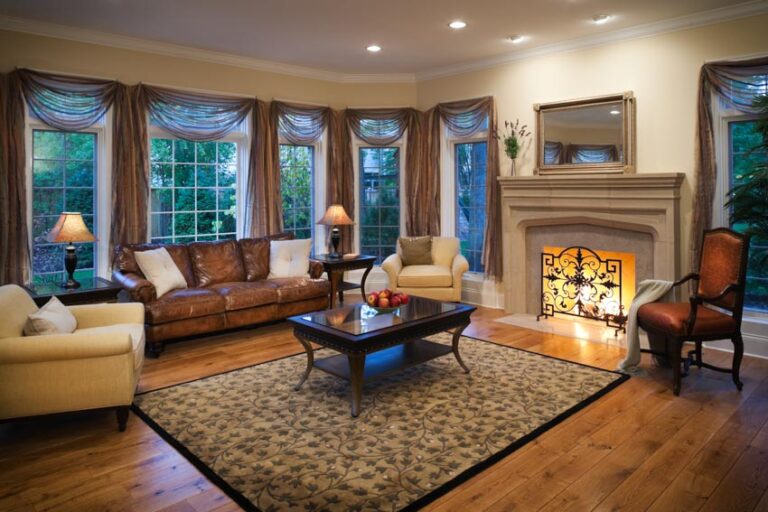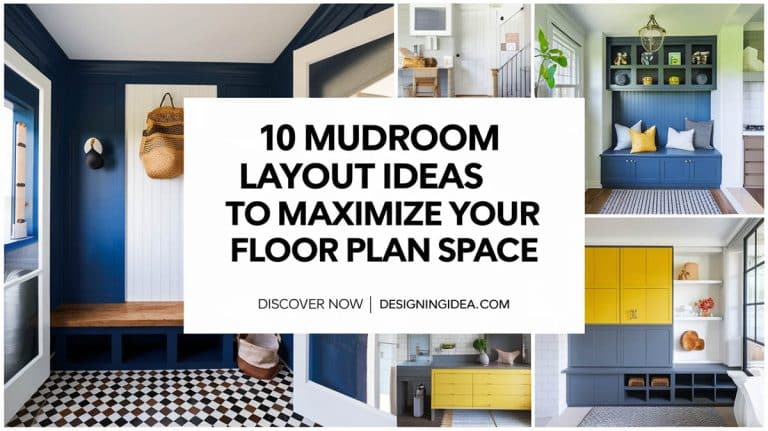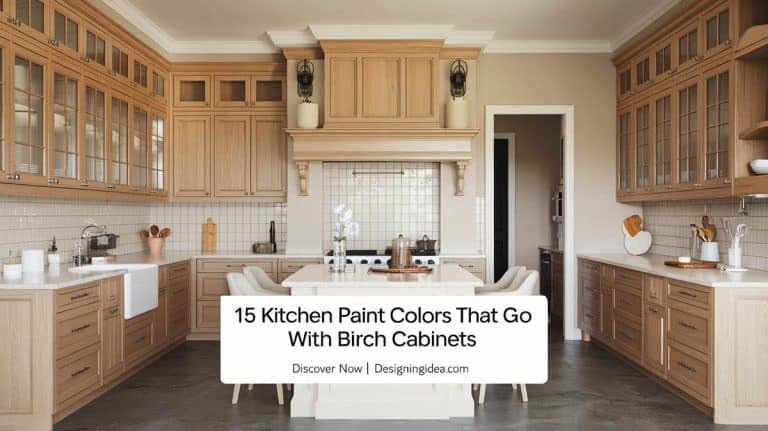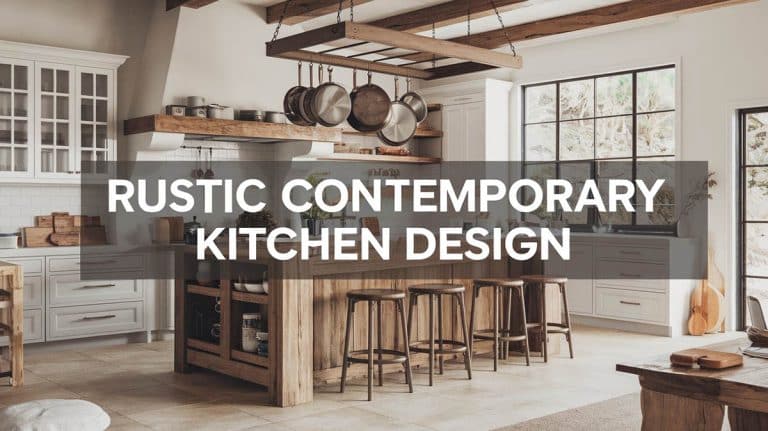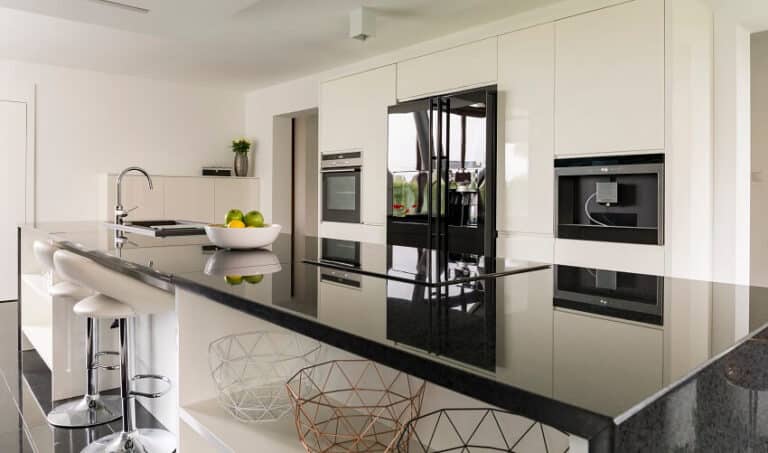What Are Important Kitchen Layout Dimensions To Know?
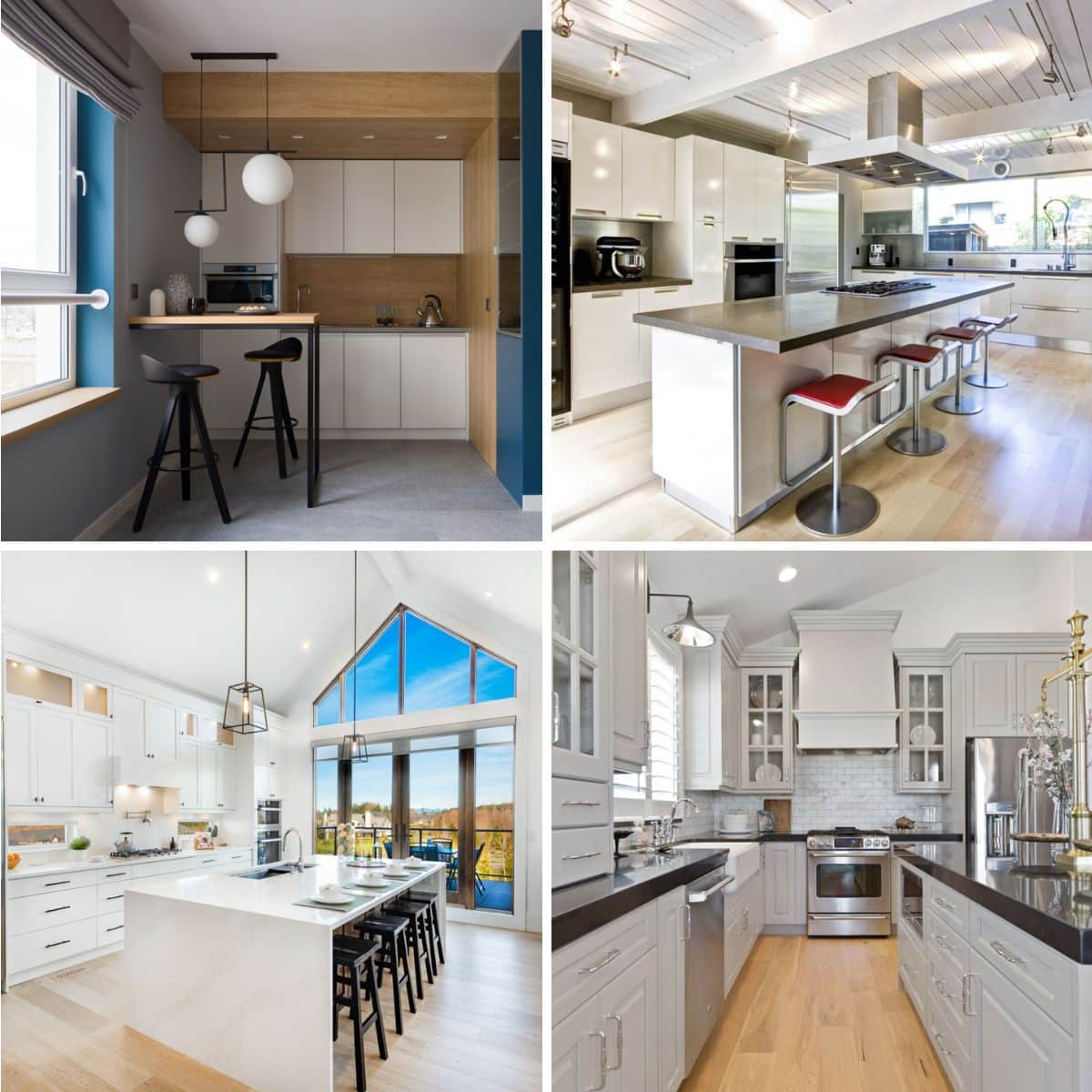
The kitchen is one of the most critical parts when constructing or doing a quick overhaul in your home. The food we eat not only gets cooked there, but it is also where we gather with friends and family. Here, we provide you with a 101 regarding different kitchen layout dimensions. We also offer measurements that can be tweaked and readjusted to accommodate the actual size of your floor plan.
Standard Kitchen Dimensions
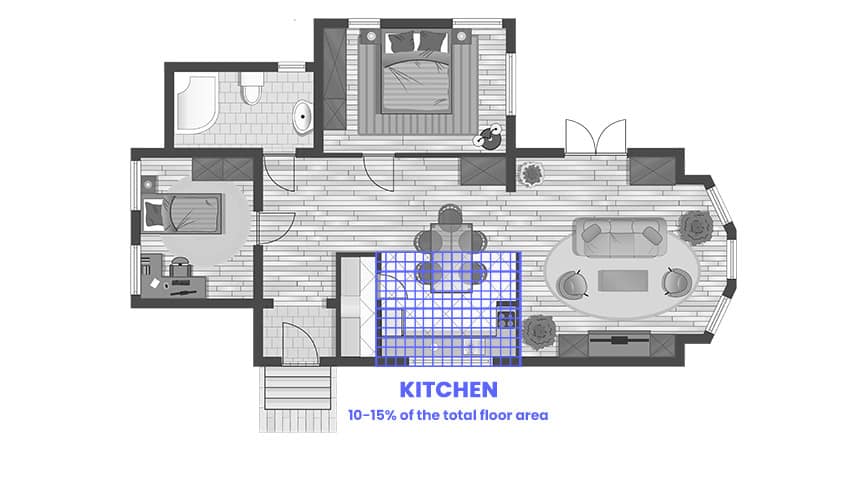
The kitchen is often the most used room and is considered the heart of any home. This is where the homeowner cooks and dining memories are made, making kitchens one of the most important things that homeowners should consider when constructing or renovating a home.
A basic understanding of what size and dimensions are needed for different kitchen aspects and layouts will ensure that ergonomics and efficiency are integral in this room, where work is done in preparing meals and making memories.
The first thing to determine before any other building or remodeling project is the measurement of the space. The measure will differ from one household to the other depending on different factors, including the size of your house, if you are building or remodeling an existing kitchen in an old home, or the layout you will go for.
In accordance with the U.S Census Bureau, the average size of a home is 1500 square feet, but the standard size of today’s new home is 2600 square feet, and the kitchen more often occupies about 10 to 15 percent of that space. If you have a home of 1500 square feet, then 10 or 15 percent of that space or 150 or 225 square feet will be the allotted space for your kitchen.
Countertop Height
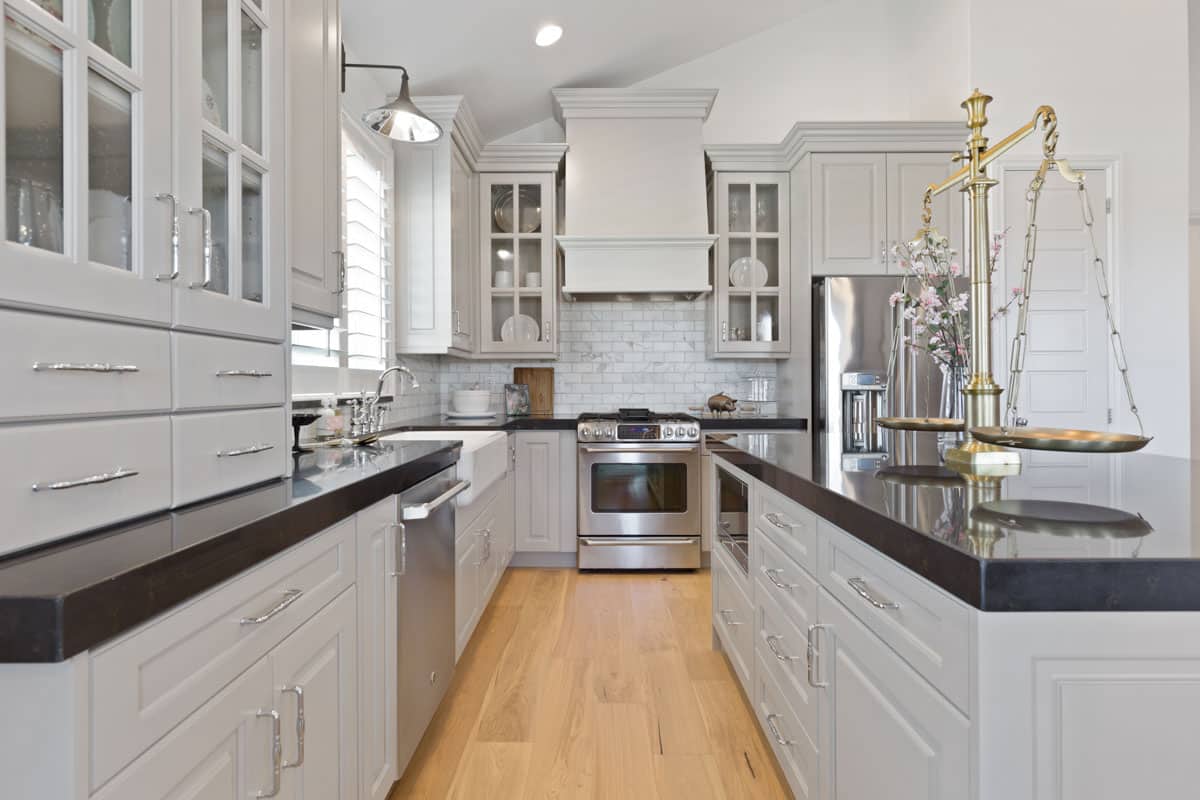
The standard countertop height for kitchens is 36 inches or around 91 centimeters from the floor. This distance is mandated by the American National Standards Institute and the Kitchen Manufacturers of America. However, the height can vary depending on the specific needs and preferences of the user.
Some individuals may prefer a slightly lower or higher countertop height based on their size or physical limitations. The best height for a higher countertop is 42 inches or 107 centimeters, and lower kitchen countertops for limited mobility stand at 28 to 34 inches or 71 to 86 centimeters.
Cabinet Doors
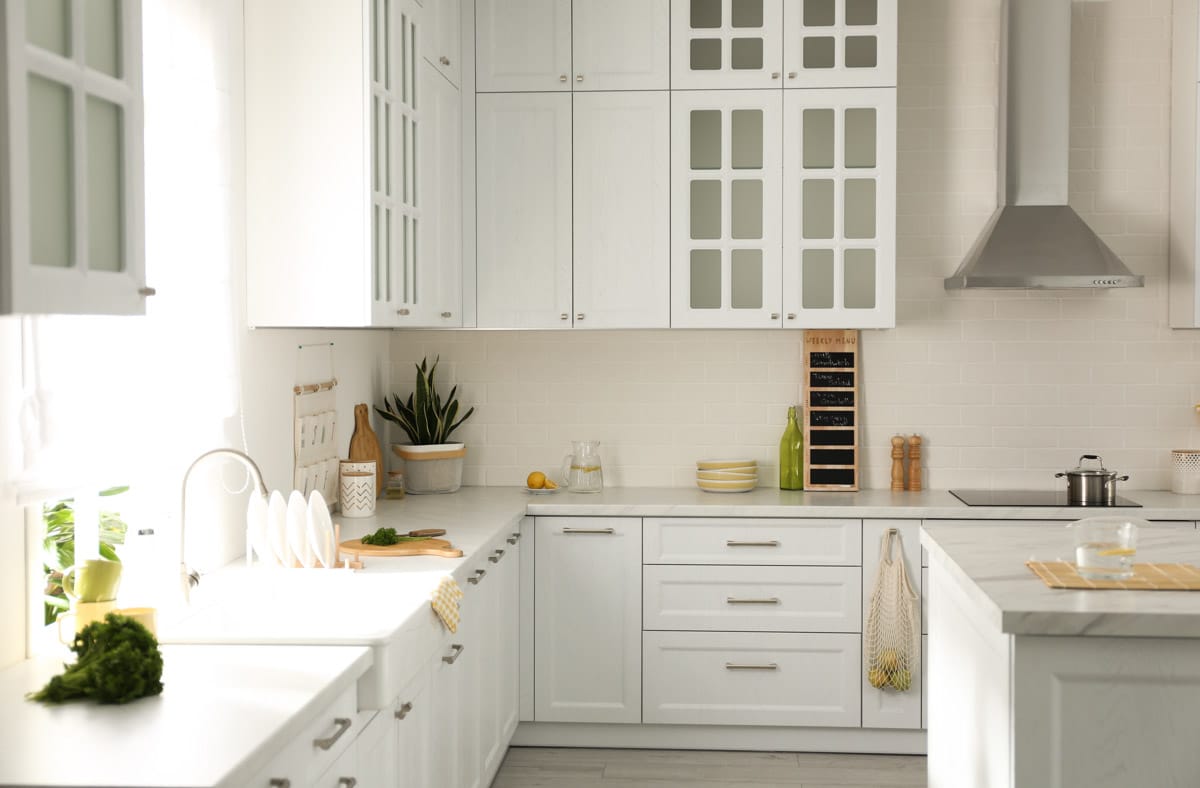
The kitchen’s standard wall cabinet door size is between 12 to 26 inches and 30 to 66 centimeters in width, with a height between 24 and 42 inches or 61 to 107 centimeters. This depends on the type of cabinet door the homeowner would want. Some popular options include flat panel doors, raised panel doors, and glass panel doors.
Peninsula
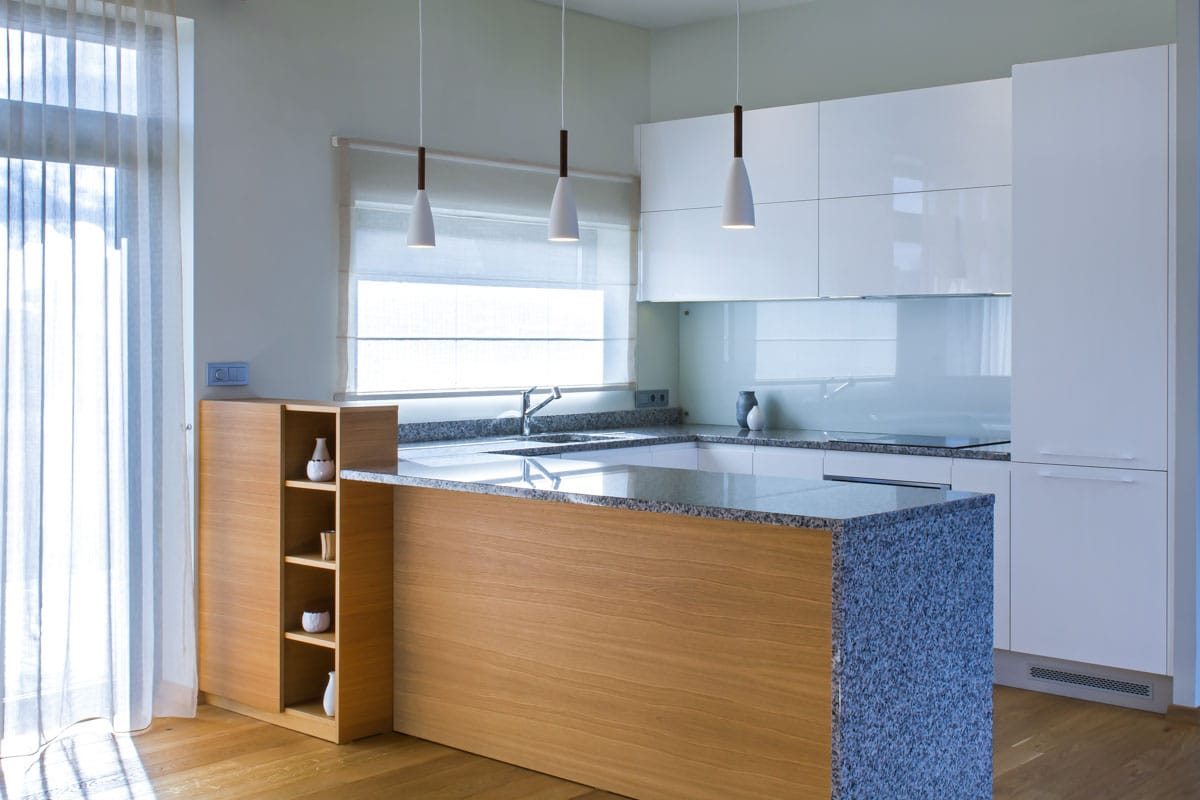
The dimensions of a kitchen peninsula depend on several factors, like the size and layout of the kitchen, the intended use of the peninsula, and the kitchen aesthetic. Generally, a kitchen peninsula with seating should be at least 42 inches or 107 centimeters long for comfort.
The standard countertop height for kitchens is commonly 36 inches or 91 centimeters from the floor. At least 36 inches or 91 centimeters of clearance should be around the peninsula for comfortable movement and seating.
Appliance Sizes
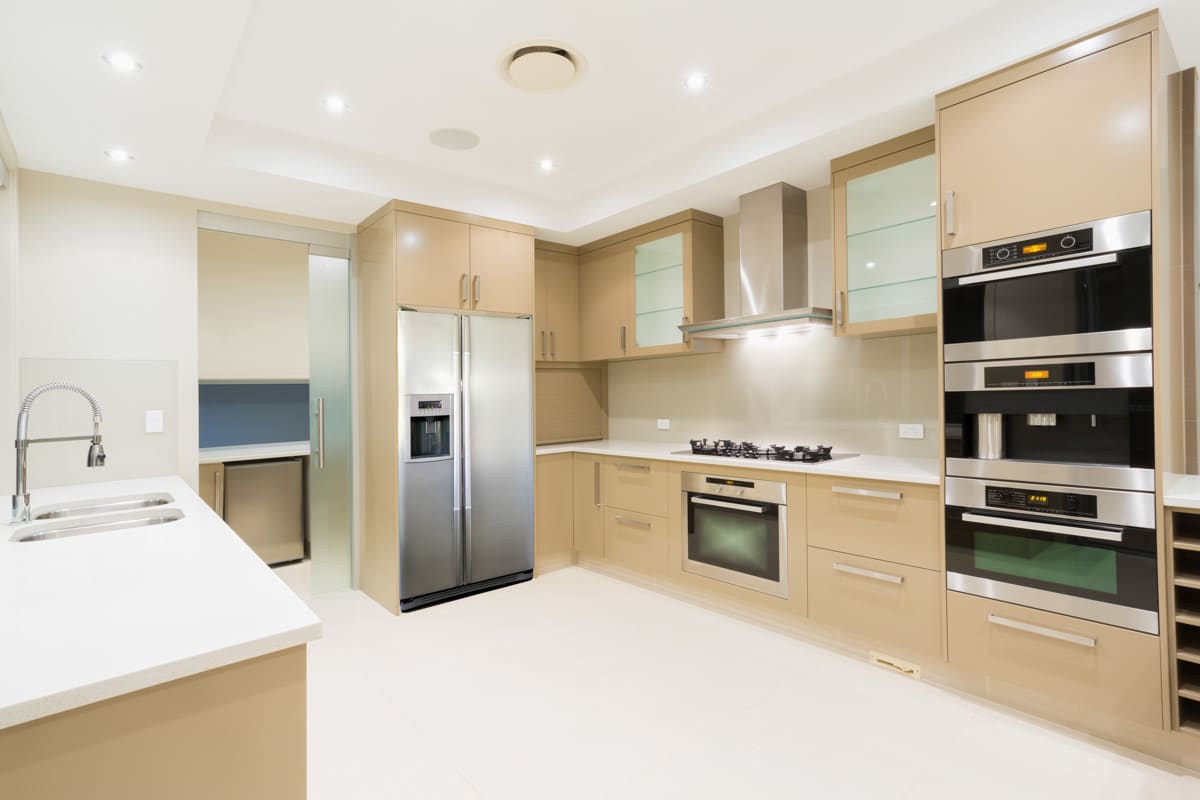
Kitchen appliances are available in several sizes, each with its particular application. Often, appliance size determines the specific appliance homeowners would go for. For example, different sizes of the same appliance offer additional storage and operational capacities. This way, homeowners will always be able to select one that’s a perfect match for their in-home needs.
Stovetop Size
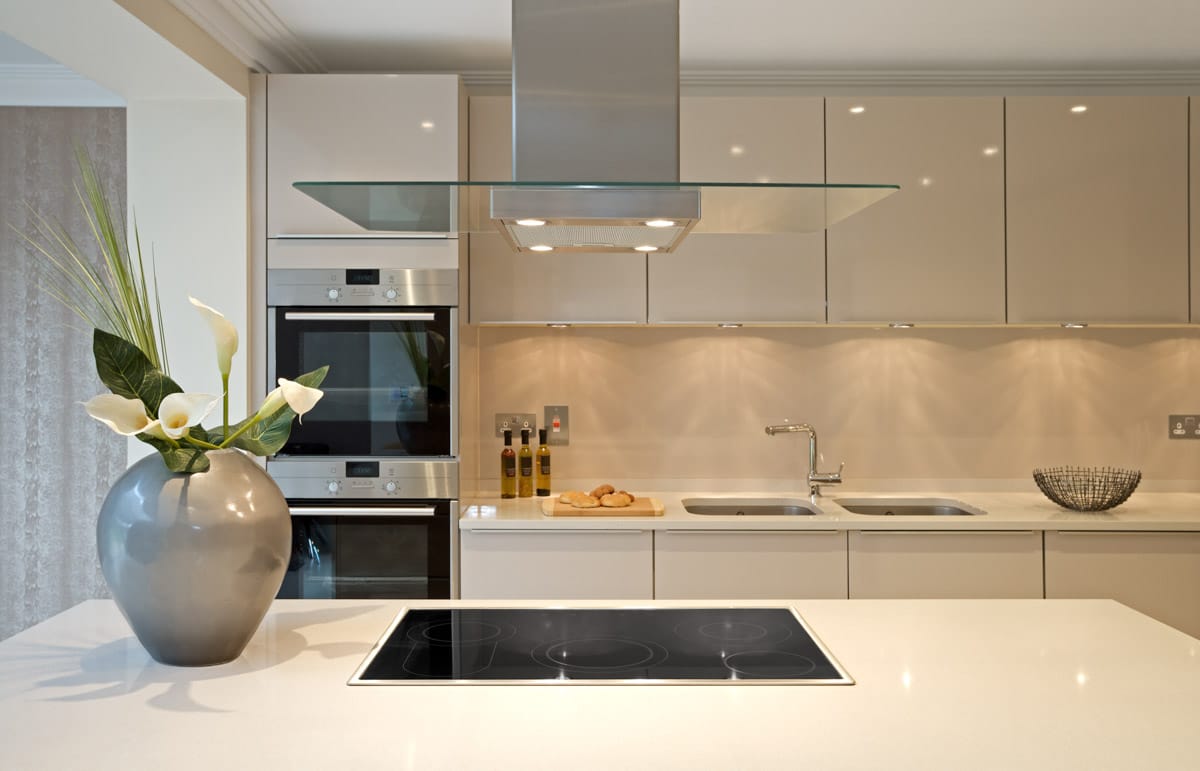
Stovetops can come in larger or smaller sizes to fit different kitchen layouts and needs. Smaller stovetops, with widths of around 24 inches or 61 centimeters, are common in apartments or smaller kitchens.
Larger stovetops, with widths of up to 36 inches or 91 centimeters, are available for those who need more cooking space or have a larger kitchen. The number and size of burners on the stovetop should also be considered to ensure they can accommodate the pots and pans homeowners use frequently.
Door Clearance
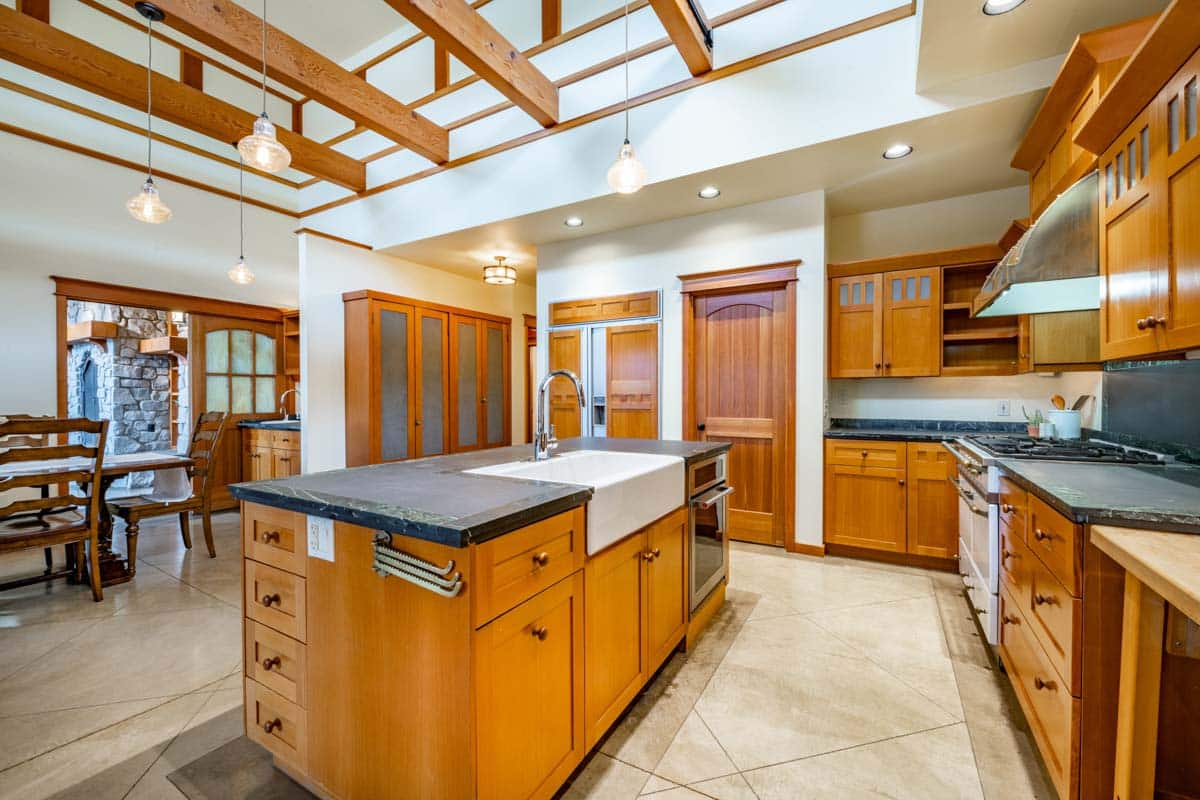
Guidelines are available in kitchen construction and renovation. Still, one thing is said about the door entrance: the door should not interfere in any way with any kitchen function or operation. This will also be the case regarding appliance doors, which should not bump or interfere with each other.
The walkway is related to the entrance and the space allotted for foot traffic in the kitchen. This space should be around 36 inches or 91 centimeters to ensure space even though a person is seated on the island or peninsula.
Kitchenette Size

The size of a kitchenette can vary depending on the available space and the desired features of any homeowner. A kitchenette is typically a small, compact kitchen designed to provide basic cooking and food storage facilities in a limited space.
An average kitchenette is about 58 by 24 by 36 inches or around 147 by 61 by 91 centimeters. Most kitchenettes will have a sink and a space for a microwave, while the fridge is commonly placed beneath the cabinet.
Kitchen with Island
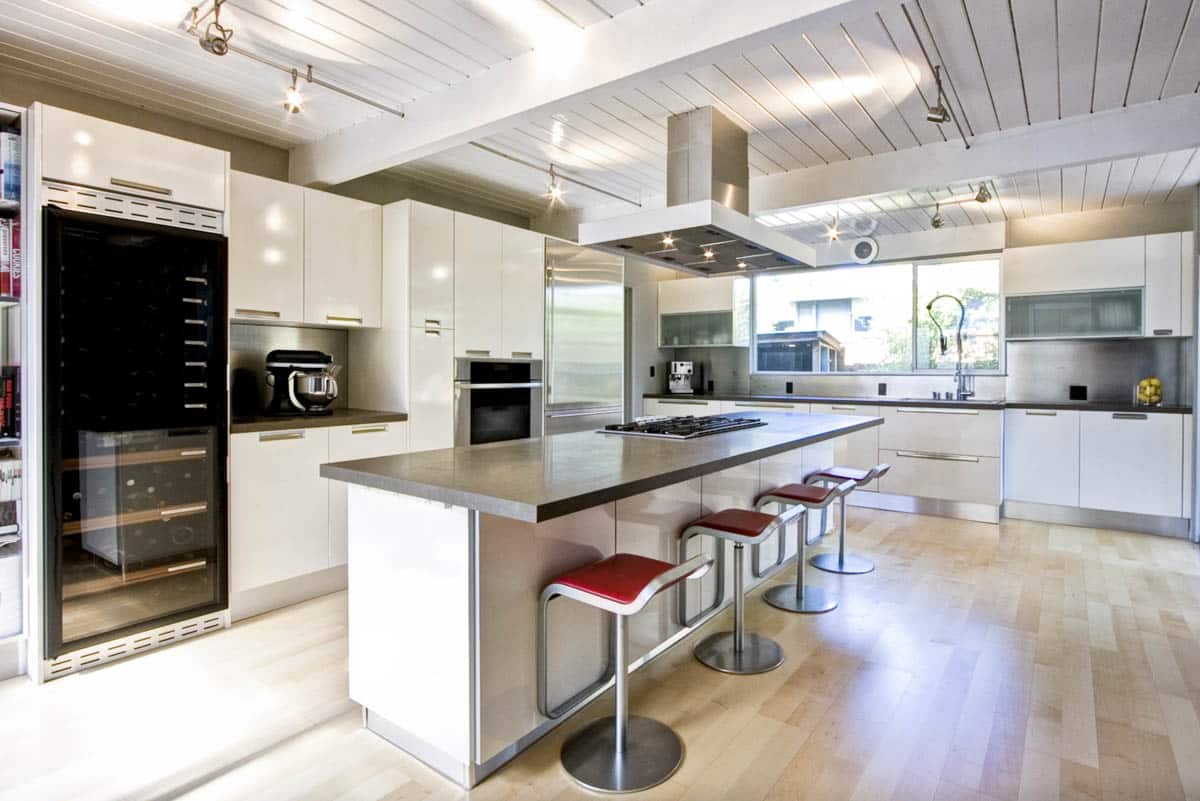
When it comes to kitchen island size guidelines, it’s important to consider the available space in any homeowner’s kitchen. For an island, the minimum size recommended is around 2 by 4 feet, but as a general rule of thumb, the kitchen island should be around 10 percent of the total kitchen area.
Let’s say that the entire kitchen is 160 square feet; the kitchen island for the space should be at least 16 square feet. When it comes to height, an island without seating is 36 inches or 91 centimeters tall, while an island with seating stands at 42 inches or 107 centimeters tall. You can use this kitchen island size calculator to easily determine the optimum dimensions to use based on your room’s floor plan.
Minimum Kitchen Aisle Width

There are two aisle dimensions to consider, and that is work and walkway aisles. A work aisle is where you do the work in the kitchen: the cutting, the peeling, and the cooking. On the other hand, a walkway aisle is a space you utilize for walking or moving around.
The average width of the aisle for a workstation in a single-cook kitchen is 42 inches, while for multiple people to be able to work side by side, a work aisle of 48 inches in minimum is required.
For the walkway aisle, the minimum width requirement is 36 inches, and this space shouldn’t pass through what you call the kitchen work triangle.
A work triangle or a working triangle is an ergonomic kitchen layout that theorizes that the three main work areas of cooking preparation should form a triangle.
This layout usually requires the stove, the sink, and the refrigerator to be in a place to create a triangular space that could make it easier for the person working to be arms away from one station to the next.
The minimum aisle width for a kitchen is 36 inches or 91 centimeters for the walkway aisle and 42 to 48 inches or 107 or 122 centimeters for the working aisle. This number is also the exact dimensions for a single-cook and double-cook kitchen.
Knowing the minimum aisle width is essential because it ensures enough space for people to move around and work comfortably in the kitchen without bumping into or blocking each other’s movements.
Dimensions and Layout for Small Kitchens
| Element | Dimension/Consideration |
|---|---|
| Overall Size | Usually 70 sq ft (6.5 sq m) or less |
| Layouts | Single wall, Galley, L-shaped |
| Work Triangle | Each leg does not exceed 9 ft (2.74 m) in total |
| Walkways | At least 36″ (91.44 cm) wide |
| Work Aisles | Minimum 36″ (91.44 cm) wide for a single cook |
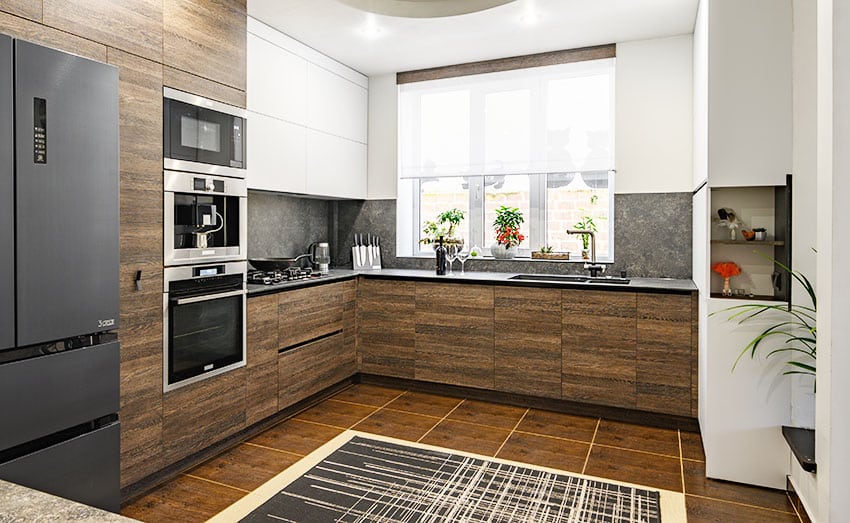
Smaller kitchens and apartment layouts usually have dimensions of 70 square feet or even less. Creativity is vital to efficiently utilize this small space.
Smaller kitchens are what you can see in smaller homes or apartments. There are a few benefits to smaller floor plans, and it is not only that they work for the place.
In smaller designs, space management is more critical, thus requiring everything to have its own space; a smaller layout also requires you to use fewer appliances and other items, and in this process, you avoid unnecessary clutter. Check out our how to organize a small kitchen guide here.
The last benefit is that smaller square footage will also require less space to clean, efficiently keeping your area in pristine condition.
You can add more workspace using a moveable kitchen island, a pegboard that could double as a vertical hanging board and decoration, or smaller appliances like a converter oven. The most common layout for a smaller kitchen is the single-row galley kitchen. This layout is efficient since it combines the fridge, the stove, and the sink in one optimized bar.
Most smaller kitchens are 75 square feet or around 7 square meters. 4 to 6 feet or 1.2 to 1.8 meters of width is needed to access the various kitchen equipment, and most of the time, smaller kitchens are around 7 to 12.5 feet or 2.1 to 3.8 meters in length.
Dimensions for Medium Kitchens
| Element | Dimension/Consideration |
|---|---|
| Overall Size | 100 to 200 sq ft (9.29 to 18.58 sq m) |
| Layouts | Galley, L-shaped, U-shaped, single wall with island |
| Work Triangle | 4 to 9 ft (1.22 to 2.74 m) per leg |
| Walkways | At least 36 in (91.44 cm) wide |
| Work Aisles | 42″ (106.68 cm) for one cook, 48″ (121.92 cm) for multiple cooks |
| Island Clearance | 42″ (106.68 cm) for one cook, 48″ (121.92 cm) for multiple cooks |
| Island Size | 3 ft x 5 ft (0.91 m x 1.52 m) recommended |
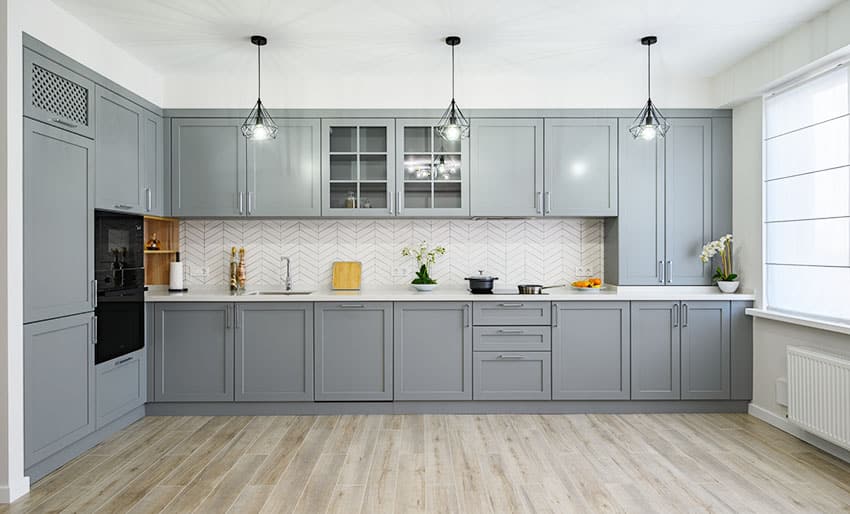
Mid-sized or medium-sized floor plans are the closest to the size of the standard kitchen. A kitchen layout this size could reach 100 to 200 square feet, and for this size, you could fit a decent-sized prep and dining island with breakfast stools on one side. A medium-sized kitchen is also great for more space when you choose to do the entertaining while you cook.
The National Kitchen and Bath Association (NKBA) recommends walkways within the layout be at least 36″ in width. For additional cooks at the same time, aisles should be 48″ wide.
There are many factors in deciding what size of kitchen you need, the number of heavy appliances you have, who and how many people will use the area, how big the household is, and how often you cook. You will be utilizing the space for food preparation more often than usual.
In that case, it is smarter to invest in a medium over a smaller layout to accommodate all the food and appliances you want to have. Opting for a medium kitchen is also an excellent compromise to a kitchen that is not too small to feel cramped yet not too big to feel uncozy.
Most medium kitchens are 100 to 200 square feet which is a great size to get a large island to act as added storage and seating option. Compared to a smaller kitchen, a medium-sized one will take in more appliances and cabinetry, which could be essential to specific homeowners.
Dimensions for Large Kitchens
| Element | Dimension/Consideration |
|---|---|
| Overall Size | Typically over 200 sq ft (18.58 sq m) |
| Layouts | Open concept, L-shaped, U-shaped, with an island or peninsula |
| Work Triangle | Legs can be over 9 ft (2.74 m), but should not exceed 25 ft (7.92 m) total |
| Walkways | At least 42″ (106.68 cm) wide |
| Work Aisles | Minimum 48″ (121.92 cm) wide for multiple cooks |
| Island Size | Larger than 4 ft x 6 ft (1.22 m x 1.83 m) is available |
| Island Clearance | At least 48″ (121.92 cm) clearance around islands |
| Counter Space | An abundance of counter space; continuous runs of 36″ (91.44 cm) or more |

You often see larger floor plans in bigger houses, which are also more often what home cooks and bakers want. Large kitchens have a measurement of around 200 square feet and up, and this is only an estimate. Some larger layouts could be more prominent, especially if used with an open-concept floor plan with a dining table incorporated, a breakfast nook, or a large pantry.
A larger kitchen can have some of these benefits. First, it can accommodate more storage and larger appliances. This is especially important for more extensive appliances like a double-door refrigerator, additional freezers, or dishwashers. More storage is also great for home cooks and bakers who want large amounts of ingredients always available for their convenience.
A larger area will also allow you to have more breathing room and more room for you to move around quickly without bumping something accidentally. A lot of counter space is another benefit of large kitchens, especially if you bake a lot.
Generally, a large kitchen should have a minimum area of 200 square feet or 18.58 square meters, while bigger kitchens in larger homes rarely get more extensive than 400 square feet.
Because of the larger size, this kitchen can accommodate more experimental layouts like the broken peninsula or g-shaped kitchens. This kitchen size will also hold space for a bigger island which will benefit many homeowners in terms of extra space and storage.
Kitchen Layout Sizes by Type

Since you have decided how big or small you want your floor plan to be, it’s time to determine how you want it to look. You do that by choosing and deciding your kitchen layout.
Kitchen layouts are not just for aesthetics since you and your architect need to coordinate with the given requirements for the layout like clearance space or the work triangle that is Ergonomics 101 on how to move around your space easily.
Kitchen size and layout differ, and homeowners must decide on both factors. If they have decided on the size, whether a small or large kitchen, the next thing to consider is the layout, which will offer different options benefiting one purpose to the other. Various layouts are designed so that they can adapt to the space given.
When the right kitchen arrangement is adapted for the home, it will offer maximum usability and flexibility for the kitchen without any structural constraints. With that in mind, here are some typical culinary space layouts and their dimensions to help you decide.
Dimensions for Galley Kitchens

A galley-style cooking area is an excellent choice for a layout if you are looking for efficiency. Galley kitchens have a layout that has a walkway in the middle of two workstations or countertops.
There are two types: either a single-row galley or a double-row galley culinary space. A single-row galley fits everything into a single linear bar, while a double or two-row galley layout has two parallel linear bars.
You can find single-row galley kitchens in smaller homes, and this type will have everything from the sink to the oven in one single ergonomic line.
A space of 4 to 6 feet or 1.2 to 1.8 meters is provided to a single row galley culinary space layout. For a 75 square feet culinary space, the length of the counter from side to side is 12.6 feet or 3.8 meters, the width from the back of the counter to the end of the clearance space is 6 feet or 1.83 meters.
For homes with a medium-sized culinary space, a two-row galley layout could be more appropriate as it will provide more counter space for an added appliance like a built-in dishwasher or oven.
A 108 square meter space will be perfect for a two-row galley culinary space. This will provide a length of 12.6 feet or 3.81 meters from one side of the counter to the other, a distance from the back counter to the other of 8.8 feet or 2.64 meters, and a clearance space between counters to work in the aisle of 4 feet or 1.22 meters will be provided.
A two-row galley kitchen typically features two parallel countertops with a walkway in between. Generally, a two-row galley kitchen should have a minimum width between 4 to 6 feet or 1.2 to 1.8 meters and a minimum length ranging from 7 to 12.5 feet or 2.1 to 3.8 centimeters. All in all, it should fit an area of around 108 square feet or approximately 10 square meters.
Checkout our stylish modern galley kitchen design ideas here.
Single Wall Kitchen Layout Dimensions
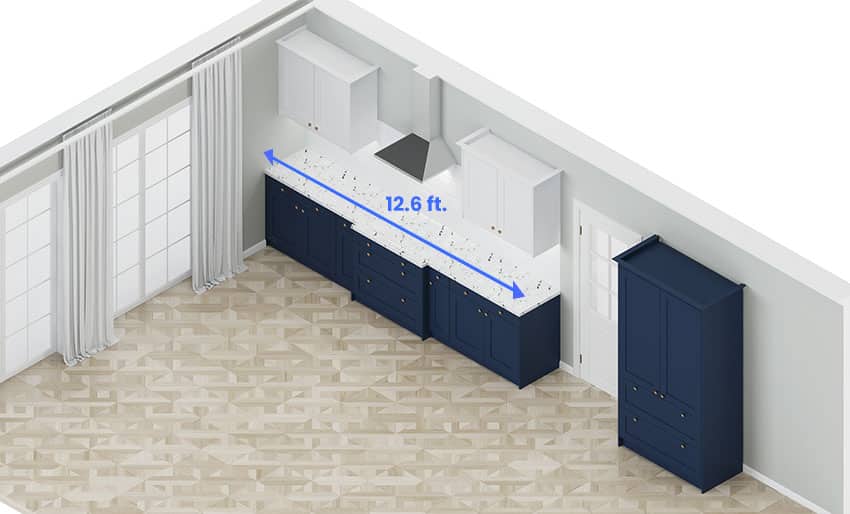
A single wall culinary space layout is excellent for planning an open floor plan and opening up to your dining table or even the living room area. Same as with small kitchens, creativity is required to figure out how to fit everything in a single line of counter space and working station. A single wall layout has every working station situated on one wall.
A single-wall kitchen layout is popular for smaller homes or apartments with limited space. All the kitchen elements are placed along one wall in this layout, making it a space-saving option. The dimensions of a single-wall kitchen layout can vary depending on the available space and the design preferences of the homeowner.
These dimensions could differ from what size of floor plan you have, but for a standard-sized culinary with a single wall layout, a length running from one end of the counter to the other will require at least 12.6 feet or 3.81 meters of space. A bigger house could call for an even longer single-row design.
Generally, a single-wall kitchen layout should have a minimum width between 4 to 6 feet or 1.2 to 1.8 meters and a minimum length between 7 to 12.5 feet or 2.1 to 3.8 meters.
Pullman Kitchen Sizes
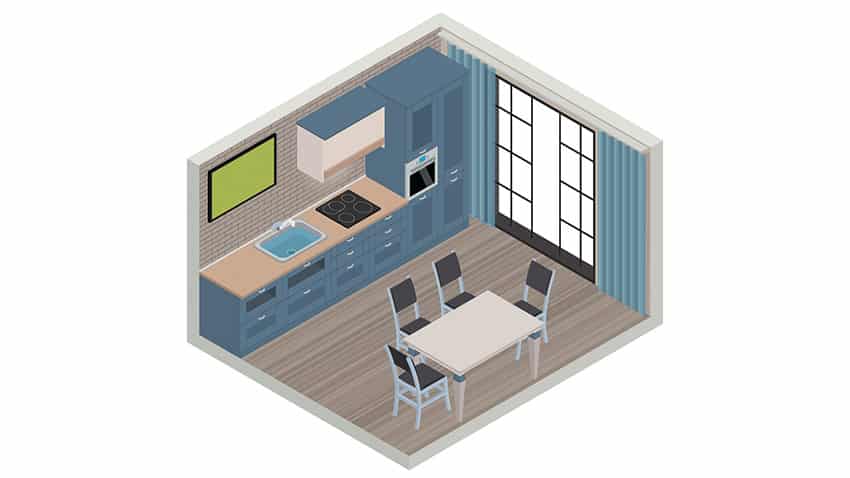
I-shaped kitchens are also known as Pullman Kitchens. It refers to kitchens with the same layout as a single-wall layout or a single galley layout.
Pullman kitchens are what you call long and narrow layouts with everything filled in a single row. You can often find this style in small apartments and lofts where every space is utilized.
Just like single row galley kitchens, for a room of 75 square feet or 7 square meters with a width of 12.6 feet or 3.81 meters and a length of 6 feet or 1.83 meters, a minimum clearance space of 4 feet or 1.22 meters is required.
Like smaller kitchens, I-shaped designs need creativity to be able to fit everything on a single countertop. You can utilize space by installing a pot rack suspended from above or even installing skylights to save you the counter space needed for lights.
An I-shaped or straight-line kitchen features all kitchen elements arranged along a single wall. This layout is commonly used in small spaces or studio apartments. Generally, it is the same as a single galley kitchen layout in look and dimensions.
U Shaped Layout Kitchen
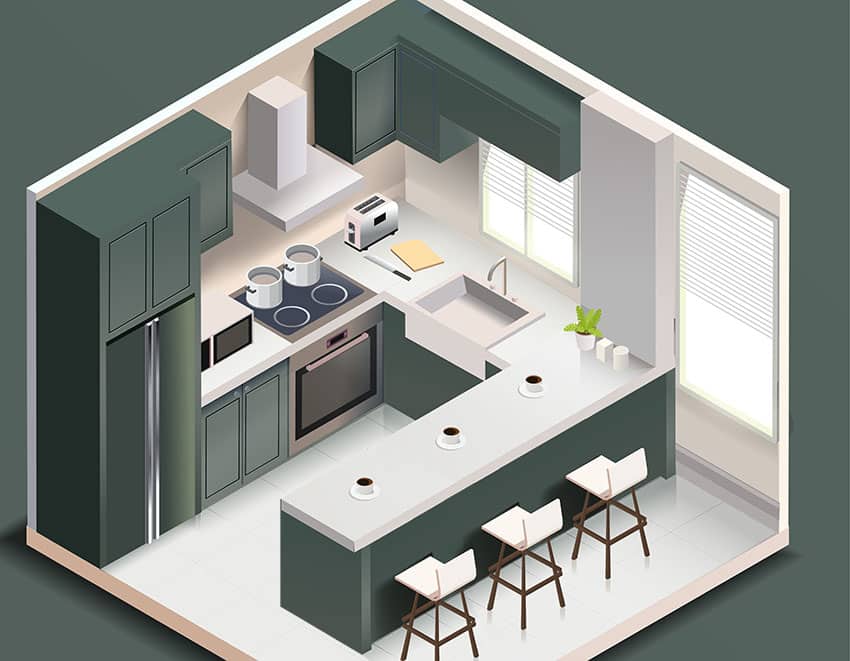
Another excellent layout for smaller and medium-sized floor plans is the U-shaped kitchen layout. You can ensure that there will be no wasted space because three sides of your space will be used for counters, cabinets, and appliances, with the floor space in the middle just enough for you to move around comfortably.
Think of a standard 107 square feet kitchen with a length of 10.2 feet or 3.15 meters and a width of 10.6 feet or 3.2 meters. 5 feet or 1.53 meters of area is the minimum that should be allowed for movement and working space.
This layout takes the benefits of a galley kitchen space-saving solution plus accessibility for one user, and adds a third wall to create the ultimate triangular floor plan. – Black & Decker The Complete Guide to Dream Kitchens, Sarah Lynch
For bigger kitchens with more area left in a U-shaped layout, homeowners often decide to add central island counters for added storage and workspace.
For a medium-sized culinary space of 155 square feet, with a length of 10.4 feet or 3.25 meters and a width of 15 feet or 4.5 meters, a center island of 4.10 feet by 4 feet will be perfect. It will leave 3.6 feet of space on all sides, perfect for moving around your room.
The U-shaped kitchen layout features three walls of cabinets and appliances that form a U-shape, with the fourth wall open for access. This design provides ample counter and storage space and is ideal for larger kitchens. Traditional U-shaped kitchens are 108 square feet or 10 square meters big, but can be adjusted for larger spaces.
C Shaped Kitchen Sizes

A C-shaped culinary layout, as the name would suggest, is shaped on the letter. It is essentially a U-shaped design inverted to a 45 degrees angle. This is great if you want to include breakfast stools outside one side of the counters, and the counters will also serve as a partition between rooms.
Like a U-shape layout, a C-shaped culinary space would have all cabinetry and appliances on three adjacent sides of the walls. A clearance space for walking around and cooking should be 5 feet or 1.53 meters at the minimum and can go from 6 to 8 feet or more for more oversized C-shaped kitchens. See some examples of 8×8 ft kitchens here.
A C-shaped kitchen layout features two parallel walls of cabinets and appliances, with a third wall forming a C-shape. This kitchen layout is ideal for smaller spaces or open apartment floor plans, as it maximizes counter and storage space while allowing for an unobstructed traffic flow.
One might look at U and C-shaped kitchen layouts and think they are the same, but the main distinction is the number of walls used in the kitchen design. If the U-shaped kitchen uses three walls, the C-shaped kitchen uses only two walls, with the third wall forming a C-shape.
What is The Minimum Size of a Kitchen?

A room can qualify as a culinary space if it has some primary appliance and storage option that helps us prepare the food we eat.
Some essential appliances used and should be in all kitchens are refrigerators, an oven range with a stovetop, a sink, and a free counter space where we chop and mix and other kinds of stuff.
The minimum space for a cooking area to accommodate such and be big enough for us to move around in it should have a width of 5 feet and a length of 8 feet. Read more about specifics about kitchen counter measurements here.
What is The Best Size for a Kitchen?

The ideal size of a culinary space should occupy 10 to 15 percent of the total space of your house. A vast floor plan would feel excessive in a small home, while a small layout would feel out of place in a bigger house.
Remember that the dimensions provided are just rough estimates for standardized home kitchen sizes, and these layouts are adaptable to whatever size your design will be.
Ultimately, the best culinary space size is what you want it to be. Every one of us has individual choices and needs to be accommodated, and there is no rulebook in deciding what works for you.
You may want to use a kitchen design software program to plan your space. This will enable you to visualize your project and attempt to get a feel for space considerations before doing any costly work.

